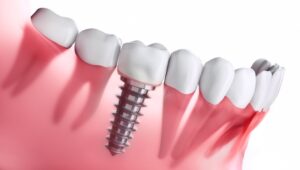Are you thinking about straightening your smile? If traditional metal braces make you cringe, you might have heard of Invisalign as a popular alternative. But is it the right choice for you? Let’s explore some key considerations and gain insights from professionals to help you decide.
What Is Invisalign
Invisalign uses a series of clear aligners to shift teeth into place gradually. They’re nearly invisible, which makes them a favorite among those who prefer a subtle approach to orthodontics.
Benefits of Choosing Invisalign
-
Appearance: The clear aligners are nearly invisible, which means you can smile confidently without feeling self-conscious.
-
Comfort: Unlike metal braces, Invisalign doesn’t have wires or brackets that might irritate your mouth.
-
Removable: You can take them out to eat, drink, brush, and floss, making oral hygiene more convenient.
-
Fewer Visits: With Invisalign, you typically need fewer check-ups than with traditional braces.
Who Can Benefit from Invisalign?
Invisalign can treat various issues, such as crowding, gaps, and bite problems. However, it’s essential to determine if your specific case qualifies for this treatment.
Suitability for Adults and Teens
Invisalign is popular among adults and teens who want a flexible and less visible treatment. However, it’s crucial to wear the aligners for the recommended 20-22 hours a day.
Complexity of Treatment
Traditional braces might be more effective for complex dental issues. Speak with an orthodontic specialist to evaluate your needs.
Consulting with Professionals
To make an informed decision, it’s wise to consult with an orthodontist. They’ll assess your dental structure and help determine the most suitable treatment. If you’re near a dentist in Tracy, CA, they’ll offer insights based on their experience.
Cost Considerations
The cost of Invisalign varies, but it’s generally comparable to traditional braces. Factors include the complexity of your case and the length of treatment. Coverage by dental insurance may also affect your out-of-pocket expenses.
Length of Treatment
Treatment times vary based on individual cases. On average, Invisalign treatment can last from 12 to 18 months. Your orthodontist will provide an estimated timeline during your consultation.
Maintaining Your Aligners
Proper care is essential for effective treatment. Here’s how you can maintain your aligners:
-
Rinse your aligners every night and brush them gently.
-
Avoid hot water, which can warp the plastic.
-
Keep aligners in their protective case when not in use.
Commitment is Key
Invisalign requires discipline. You must be committed to wearing your aligners consistently for successful results. If compliance is a concern, discuss other options with your cosmetic dentist.
Potential Downsides
While Invisalign offers many benefits, there are a few downsides to consider:
-
Discomfort: Some patients experience temporary discomfort when changing to a new set of aligners.
-
Misplaced Aligners: As they are removable, you risk losing them if not stored properly.
-
Staining: Aligners can stain if you consume colored beverages without removing them.
Hygiene and Diet
With Invisalign, you can eat and drink whatever you like by removing the aligners. However, maintaining good oral hygiene is crucial. Brush and floss regularly to prevent cavities and gum issues.
Invisalign for Special Situations
Alternative treatments may be more appropriate if you have specific dental conditions, such as TMJ disorders, or require pre-surgical orthodontics. An orthodontic specialist can provide tailored advice if you have unique dental health needs.
Lifestyle Impact
Invisalign can fit seamlessly into your lifestyle, allowing you to engage in various activities without the restrictions common with metal braces. Whether you’re giving presentations or participating in sports, the aligners offer flexibility. Remember, however, to wear them consistently for optimal results.
Technology Involved
Invisalign utilizes advanced 3D imaging technology to create a personalized treatment plan. This technology helps predict precise tooth movements and visualize your progress. Regular updates from your orthodontist will ensure that your treatment stays on track and adjustments are made as needed.
Post-Treatment Care
After completing Invisalign treatment, retainers are crucial to maintain your new smile. You’ll likely need to wear them regularly to prevent teeth from shifting back. Your orthodontist will guide you on the best retainer plan based on your treatment outcomes.
When it comes down to it, whether Invisalign is right for you depends on your personal needs and lifestyle. It’s a flexible and discreet option for many, but dealing with a qualified Invisalign dentist located in Tracy can help tailor the treatment to your unique situation.
Final Thoughts
Invisalign offers a discreet and flexible option for teeth straightening, appealing to those who prioritize aesthetics and convenience. However, success depends on commitment to wearing the aligners and maintaining proper hygiene. While it suits many common dental issues, consulting with an orthodontic specialist is essential to determine the best fit for your specific needs. Consider alternative options if your case requires more complex treatment. Ultimately, Invisalign provides an effective solution for those seeking a modern approach to orthodontic care.




